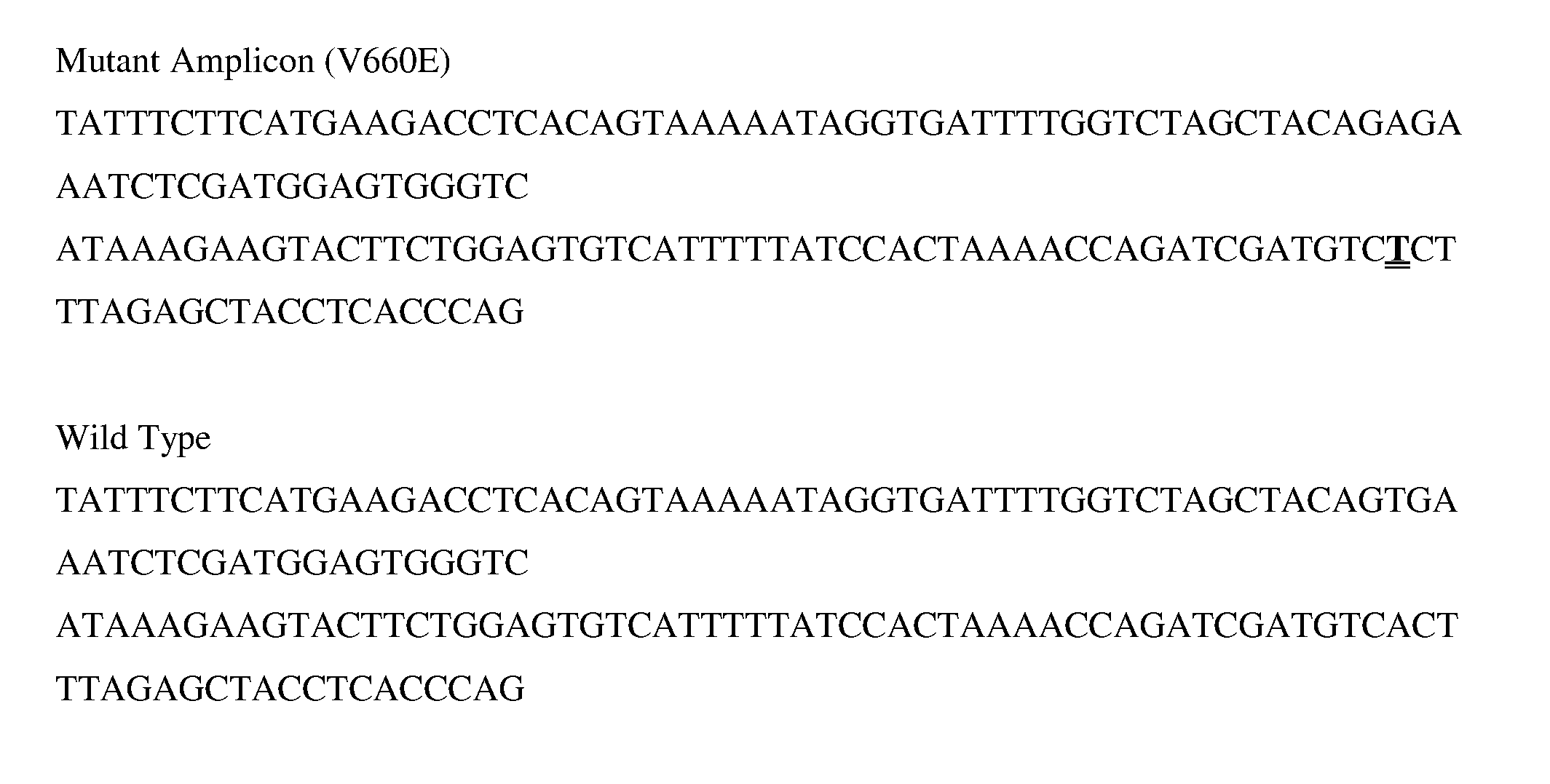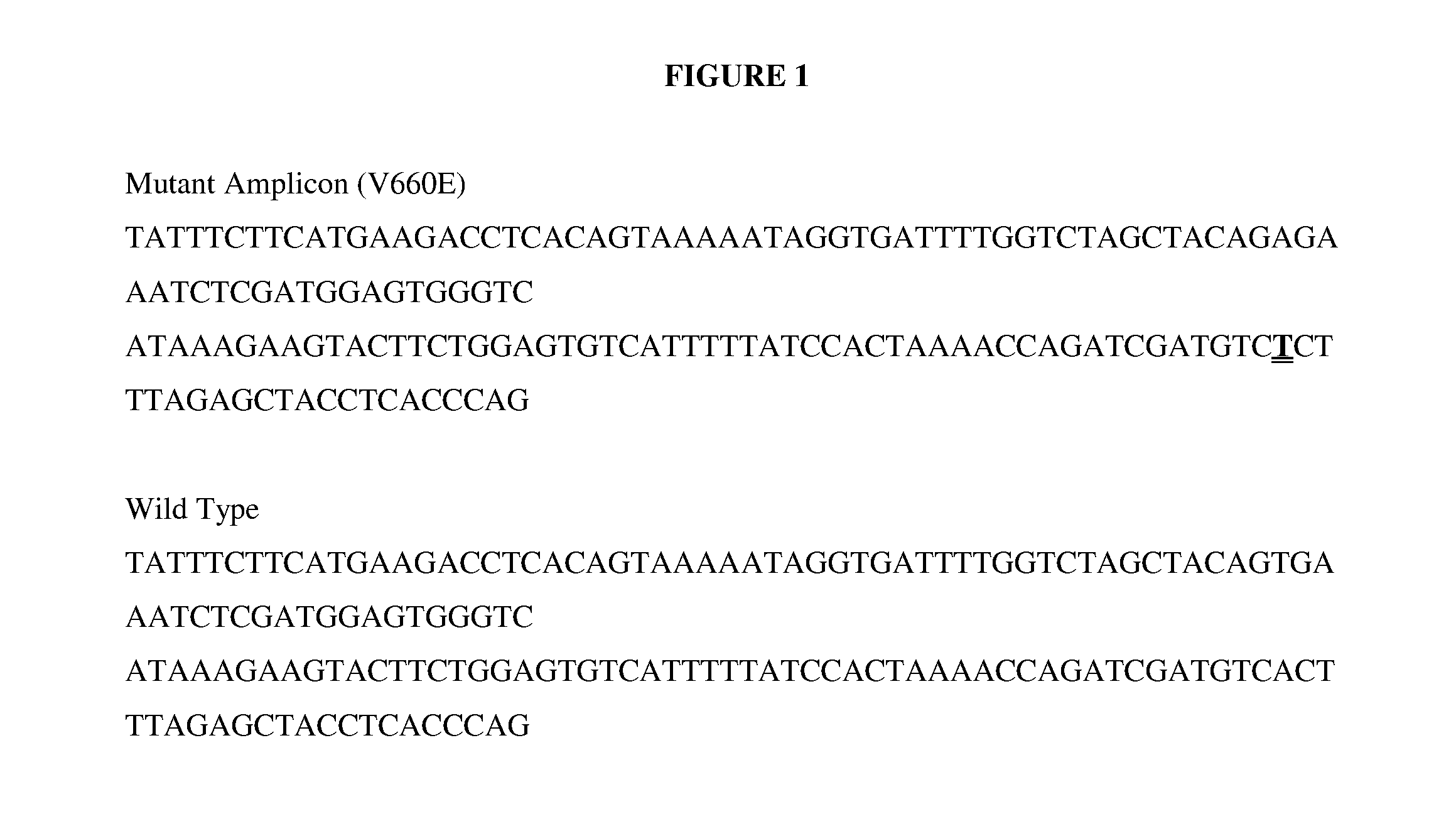Methods of Predicting Cancer Risk Using Gene Expression in Premalignant Tissue
a cancer risk and premalignant tissue technology, applied in the field of premalignant tissue cancer risk prediction using gene expression, can solve the problems of large number of endoscopic procedures performed, and the classification of lesions discovered fails to yield a definitive assessment, so as to increase cancer risk, cancer risk assessment, and cancer risk.
- Summary
- Abstract
- Description
- Claims
- Application Information
AI Technical Summary
Benefits of technology
Problems solved by technology
Method used
Image
Examples
examples 1-3
Global RNA Amplification
[0132]Global RNA amplification was carried out for each biopsy sample using the methods described in U.S. Ser. No. 11 / 959,251 and reagents from SenseAmp.
[0133]Table 1 shows the sequences of primers and probes used in qRT-PCR to measure RNA expression in each of the samples. Table 2 shows the gene sequences amplified using the primers and probes of Table 1. Tables 1 and 2 also show the Accession Number and the Official ID of each gene listed in the tables as given in the Entrez Gene online database (http: / / www.ncbi.nlm.nih.gov / Entrez / ) by the National Center for Biotechnology Information at the time of the studies. Expression data was normalized using ATP5E, GPX1, PGK1, UBB, VDAC2 and B-actin as reference genes. Data was analyzed using Student's t-test.
example 1
Risk Genes Based on Gene Expression in Colorectal Polyps
Study Design
[0134]Colorectal polyps were obtained from patients undergoing initial screening colonoscopy. Cases were selected based on the availability of sufficient biopsy tissue to provide at least 6×10 μm sections for preparation of RNA and 1 diagnostic H&E slide.
[0135]A total of fifty-six (56) polyps were obtained from forty-one (41) patients. These patients were concurrently diagnosed with distant colorectal carcinoma based on the same colonoscopy examination. In this example, analysis included only polyps with low-grade dysplasia from patients for whom low-grade dysplasia was the most advanced dysplasia, i.e. no polyps with cancer and no polyps with high-grade dysplasia were found in the patient.
[0136]In addition, sixty (60) polyps were obtained from forty (40) non-cancer patients (patients who were not concurrently diagnosed with colorectal carcinoma).
[0137]Table 3 shows the distribution of colorectal polyps analyzed and...
example 2
Risk Genes Based on Gene Expression in Colorectal Polyps
Study Design
[0142]This study had two arms: patients who were diagnosed with colon cancer at the time of the colonoscopy (n=78), and patients who were not diagnosed with cancer at the time of the colonoscopy (n=71). Biopsy specimens that exhibited low grade dysplasia (LGD) polyps ≦1.0 cm were collected for analysis. Approximately 23% of the patients had more than one eligible polyp. For these patients, RNA from 384 genes was analyzed both individually and pooled in a single sample. Table 14 below shows the distribution of colorectal polyps analyzed and the patients from whom the polyps were obtained.
TABLE 14CancerNon-cancerTotal Patients7871Sample Number135 108 Patients with multiple2116polyps(27%)(23%)
[0143]Data from Examples 1 and 2 were analyzed to quantify the degree of association of gene expression with the likelihood colorectal cancer. Within each study, gene expression was measured as the reference-ge...
PUM
 Login to View More
Login to View More Abstract
Description
Claims
Application Information
 Login to View More
Login to View More - R&D
- Intellectual Property
- Life Sciences
- Materials
- Tech Scout
- Unparalleled Data Quality
- Higher Quality Content
- 60% Fewer Hallucinations
Browse by: Latest US Patents, China's latest patents, Technical Efficacy Thesaurus, Application Domain, Technology Topic, Popular Technical Reports.
© 2025 PatSnap. All rights reserved.Legal|Privacy policy|Modern Slavery Act Transparency Statement|Sitemap|About US| Contact US: help@patsnap.com


